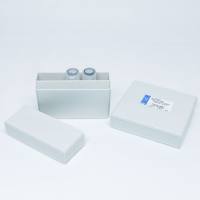Patch-Clamp Recordings of Electrophysiological Events in the Platelet and Megakaryocyte
互联网
364
Ion channels have fundamental roles in all cell types. Although fluorescent indicators can provide an indirect assessment of membrane conductances—for example, by studies of ion concentrations or membrane potential–our understanding of ion-channel activity ultimately relies on data from electrophysiological techniques. The first electrophysiological recordings from the megakaryocyte/platelet lineage used conventional microelectrode impalements of guinea pig marrow megakaryocytes (1 ). Membrane potentials in normal extracellular levels of Ca2+ were low, in the order of −14 mV, which probably reflects damage caused by microelectrode impalement since later estimates from patch clamp recordings are far more negative: approx −45 mV at rest up to approx −80 mV during activation (2 ,3 ). Nevertheless, this first electrophysiological study by Miller et al. (1 ) provided evidence for K+ conductances that lead to membrane hyperpolarizations and thereby increase the driving force for Ca2+ entry during cell signaling. Since its advent in the late 1970s, the patch clamp technique (4 ,5 ) has revolutionized our ability to directly record electrophysiological events, particularly in small cells. The initial feeling of many scientists in the 1980s was that meaningful patch-clamp recordings from mammalian platelets could never be achieved due to platelets’ small and fragile nature. This led to several alternative approaches. For example, thrombocytes from lower species such as the newt, Triturus pyrrhogaster , are larger in diameter and were used by Kawa (6 ) to demonstrate the existence of a voltage-dependent outward K+ conductance. Single-channel recordings from lipid bilayers following insertion of platelet membranes have also provided evidence for chloride channels (7 ) and thrombin-activated cation channels (8 ) in the platelet plasma membrane.







